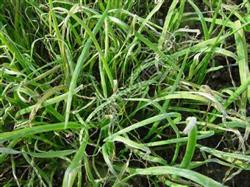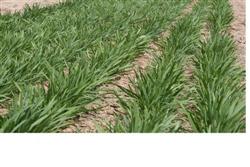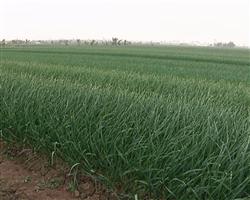Control of Botrytis cinerea of leek in greenhouse

When the humidity in the greenhouse leek shed is large, gray mold is easy to occur. After the disease, the leaves gradually produce pale brown to white spots from the tip down, both sides have, after expansion, oval or fusiform spots, and merge into large dead spots. Air humidity above 85%, temperature at 15℃~20℃, warm and humid conditions conducive to the occurrence of this disease. Control measures: 1. Select disease-resistant varieties. Broad-leaf resistant varieties such as Xuejiu, 791, Jiaxingbaigen, etc.; narrow-leaf cold-resistant varieties such as Gong, Huangmiao, Zhongjiu No. 2, etc. 2. Strengthen field management. Frequent irrigation with small amount of water helps to raise ground temperature. After each harvest, 2~3 times of shallow tillage and soil cultivation are carried out to reduce the humidity in the shed. Timely ventilation and moisture removal. Master harvest time, harvest in low humidity and no dew conditions, dry roots and cultivate soil after harvest. Remove the residual leaves of diseased plants in time, increase fertilizer application, and enhance the disease resistance of leek. 3. Chemical control. 250g of 10% Sukeling smoke agent is used for fumigation per mu, or 1000g of 10% meilin powder is used for spraying per mu, or 1000 - 1500 times of 50% Sukeling WP, 500 times of 50% thiophane methyl WP and 500 times of 70% mancozeb WP can be used for spraying control. Control the disease once every 7 days until the disease is under control.
- Prev

High-yielding cultivation techniques of winter leek in Hanzhong
Hanzhong winter leek is a leading leek variety in Hanzhong, Shaanxi Province, with large leaves, sturdy pseudostems, more tillers, high yield, strong cold tolerance and short dormancy period. it is suitable for cultivation in open field and protected field in the north, and can be listed all the year round. Winter leek is rich in nutrition, high carotene content, light spicy taste, less fiber.
- Next

Technical knowledge of fertilization in planting and cultivating garlic
The main pests of garlic are onion flies, seed flies, root mites, thrips, Liriomyza huidobrensis and so on. Prevention and control methods: (1) Agricultural control, before sowing garlic, it is necessary to turn the soil deeply and sunburn for more than 15 days, so as to reduce the number of residual diseases and pests in the soil. The base fertilizer should be fully mature, eliminate the eggs in the manure and prevent adults from laying eggs.
Related
- Where is it suitable to grow horseradish in China? it is expected to see the middle altitude horseradish in Alishan.
- How to prevent tomato virus disease reasonably? (Control methods included)
- Many people like to plant towel gourd on the balcony. What are the main points of this method and management?
- What crops can chili peppers be mixed with?
- Fertilization techniques and matters needing attention in Tomato
- What are the grafting techniques for peach seedlings in spring?
- Harm and control methods of root swelling disease of Chinese cabbage
- What are the pests of sweet potatoes? How to prevent and cure it?
- Symptoms, causes and Control methods of navel Rot in Tomato
- The cause of "Cucumber rotten bibcock" in Farmers' planting Cucumber and its Control Plan

